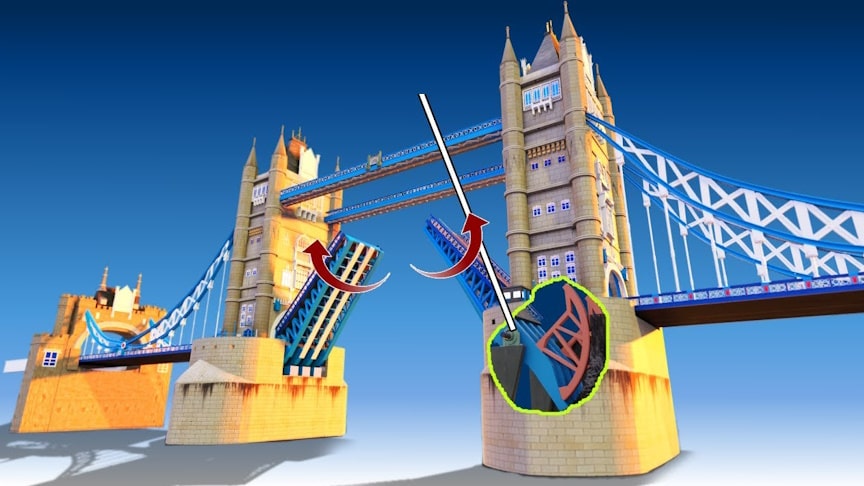Tower Bridge is a Grade I listed combined bascule and suspension bridge in London, built between 1886 and 1894, designed by Horace Jones and engineered by John Wolfe Barry with the help of Henry Marc Brunel.t crosses the River Thames close to the Tower of London and is one of five London bridges owned and maintained by the City Bridge Foundation, a charitable trust founded in 1282.
source.image: Lesics
The bridge is 800 feet (240 m) in length with two towers each 213 feet (65 m) high, built on piers. The central span of 200 feet (61 m) between the towers is split into two equal bascules, or leaves, which can be raised to an angle of 86 degrees to allow river traffic to pass. The bascules, weighing over 1,000 tons each, are counterbalanced to minimise the force required and allow raising in five minutes.
The two side spans are suspension bridges, each 270 feet (82 m) long, with the suspension rods anchored both at the abutments and through rods contained within the bridge’s upper walkways. The pedestrian walkways are 143 feet (44 m) above the river at high tide and accessed by lifts and staircases.
Advertisement
The original raising mechanism was powered by pressurised water stored in several hydraulic accumulators. The entire hydraulic system along with the gas lighting system was installed by William Sugg & Co Ltd. The gas lighting was initially by open-flame burners within the lanterns, but was soon updated to the later incandescent system.











